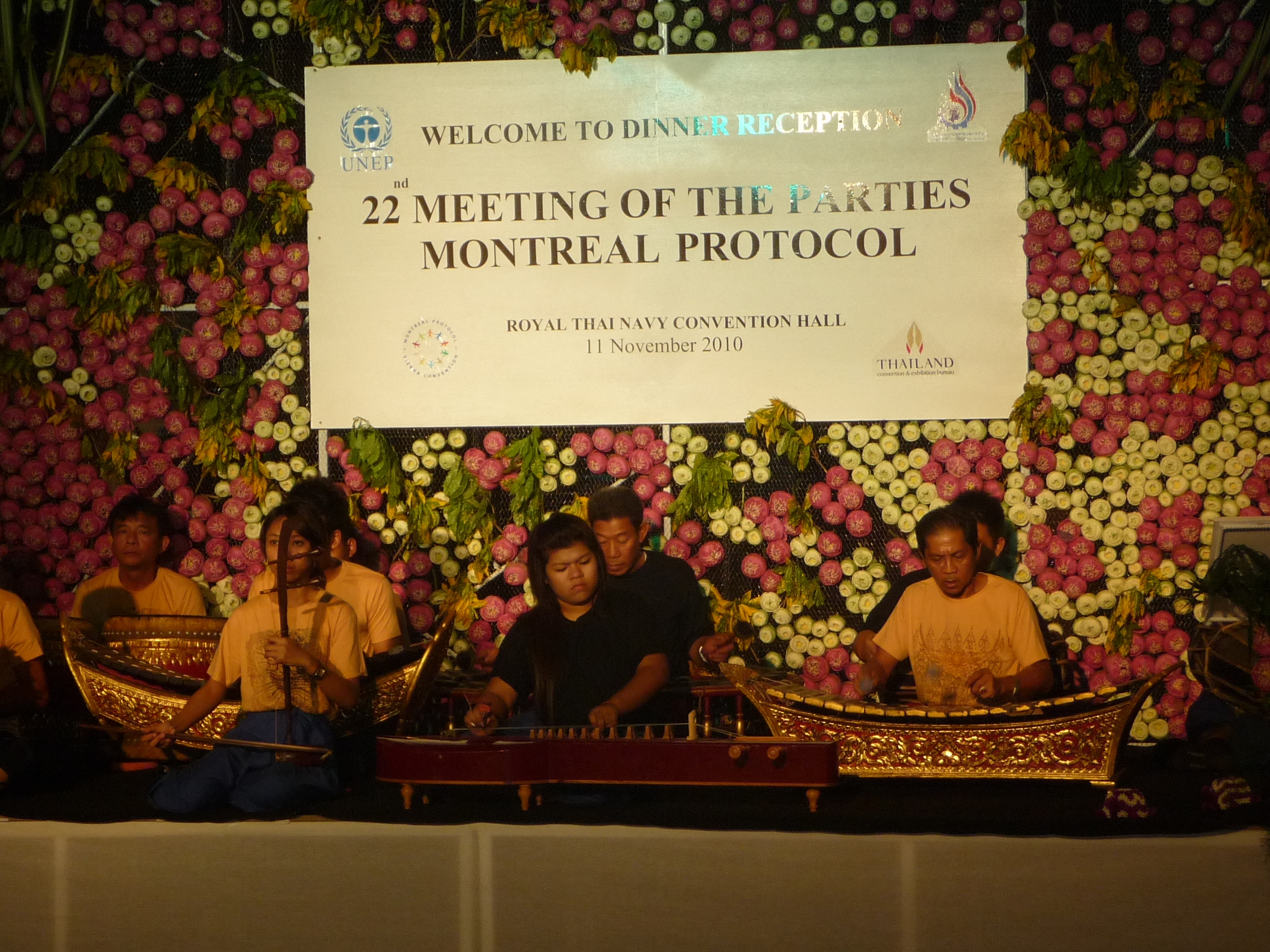Trials and triumphs at the annual Montreal Protocol meeting
 This chilly weather is certainly a shock to the system and doubly so given last week I was in balmy Bangkok attending the Montreal Protocol annual Meeting of the Parties. But it’s definitely not as glamorous as it might sound, arriving in on Sunday barely gave us time to get over the seven hour time difference before the conference kicked off on Monday morning. And, although the weather outside was glorious, temperatures inside the conference centre required scarves and jackets- thanks to heavy use of air-conditioning! The ironies of such enormous reliance on ozone depleting refrigerants at a conference aimed at protecting the ozone layer certainly wasn’t lost on us!
This chilly weather is certainly a shock to the system and doubly so given last week I was in balmy Bangkok attending the Montreal Protocol annual Meeting of the Parties. But it’s definitely not as glamorous as it might sound, arriving in on Sunday barely gave us time to get over the seven hour time difference before the conference kicked off on Monday morning. And, although the weather outside was glorious, temperatures inside the conference centre required scarves and jackets- thanks to heavy use of air-conditioning! The ironies of such enormous reliance on ozone depleting refrigerants at a conference aimed at protecting the ozone layer certainly wasn’t lost on us!
On the Agenda were several very important issues which give the Montreal Protocol the chance to really secure its position as the world’s most effective environmental treaty. Notably: two proposals to phase-down global HFC use; a decision to address HFC-23 emissions not currently covered under the UN’s Clean Development Mechanism (CDM); action to maximize direct transitions from HCFCs, a powerful ozone-depleting substance (ODS), to climate-friendly refrigerants rather than HFCs; as well as a program for recovery and destruction of ODS “Banks”-this refers to the ODS that remains in equipment at the end of its life. These cost-effective actions have the potential to avoid emissions of hundred of billions of tonnes of CO2 equivalent over the next four decades.
 However, despite the momentous climate saving opportunities facing country delegates at the meeting, there was significant opposition to them from three advanced developing countries; India, China and Brazil. Together they managed to quash meaningful discussions on HFC phase-downs and HFC-23. Sadly, there wasn’t much progress on ODS banks either. However, despite a lack of agreement on these issues there was clearly growing support from action on HFCs.
However, despite the momentous climate saving opportunities facing country delegates at the meeting, there was significant opposition to them from three advanced developing countries; India, China and Brazil. Together they managed to quash meaningful discussions on HFC phase-downs and HFC-23. Sadly, there wasn’t much progress on ODS banks either. However, despite a lack of agreement on these issues there was clearly growing support from action on HFCs.
Right at the end of the meeting a Declaration signed by 91 countries was submitted. Signatories stated their commitment to ensuring that the phase-out of ODS by the Montreal Protocol doesn’t result in the widespread adoption of HFCs. Clearly this is a big step forward and a clear signal to the UN climate talks that the Montreal Protocol is ready to assist in meeting the climate change challenge.
We were also able to inform countries about the increased risk of illegal trade in ODS, presenting our findings from a project we have been working with the United Nations Environment Programme to assess the risk of illegal trade in HCFCs. Our work has revealed widespread and growing smuggling of HCFCs and evidence that this problem is only likely to get worse.
Our colleagues from EIA’s Washington DC office also joined us so we seized on this rare opportunity to take time out to discuss ideas and strategise about how we can move forward. It’s not often that we get the chance to meet up, as most of the year we chat over the phone or via email, so it was great to be able to sit down and brainstorm.
So, all in all despite some missed opportunities by countries at this meeting, we at EIA made the most of it ensuring our message went out far and wide and I think there were some definite glimmers of hope for the future.

